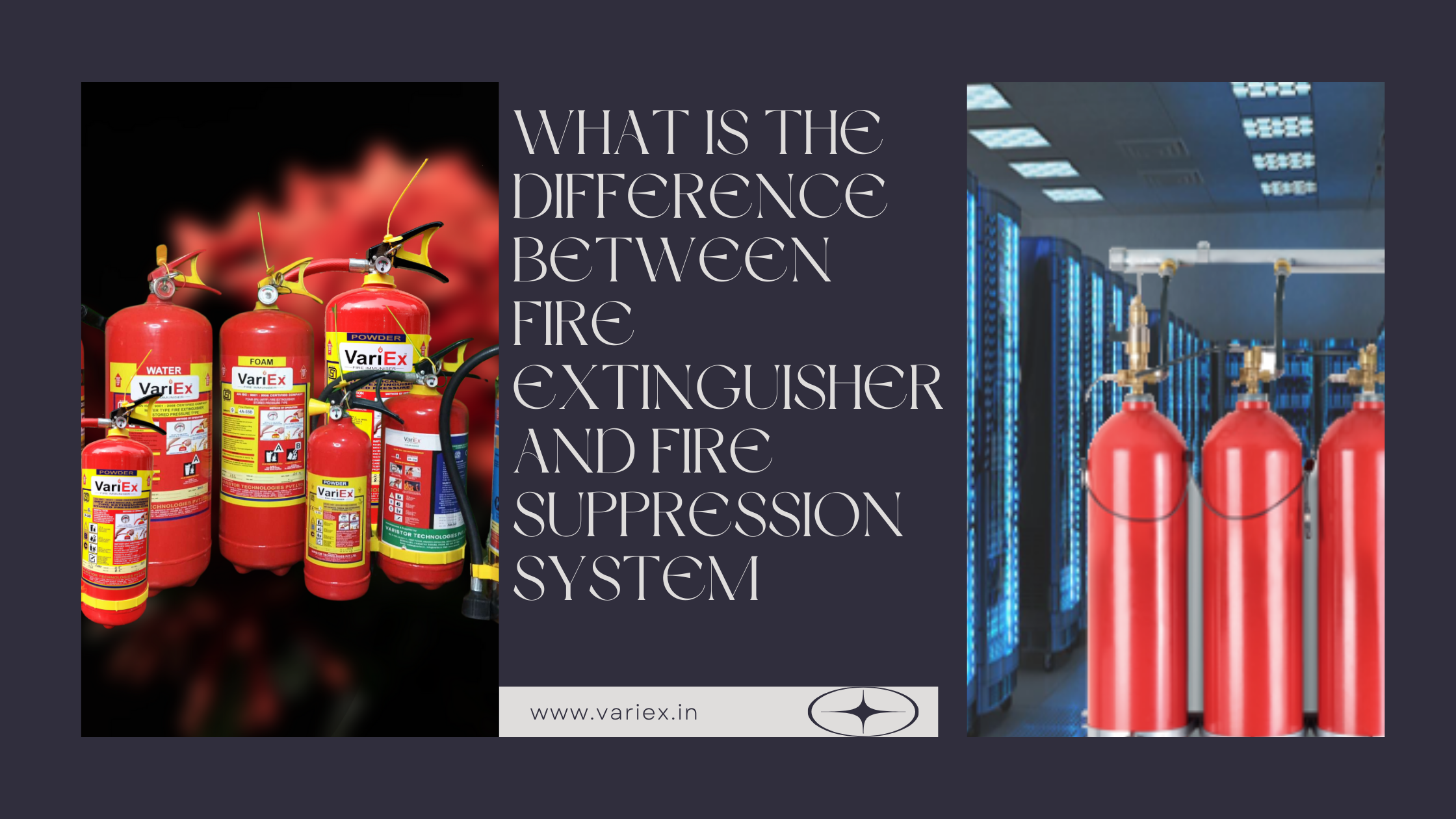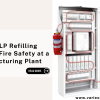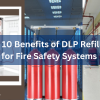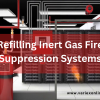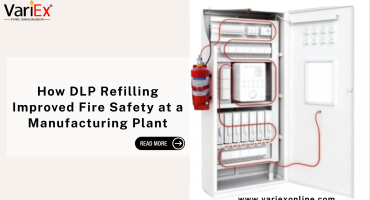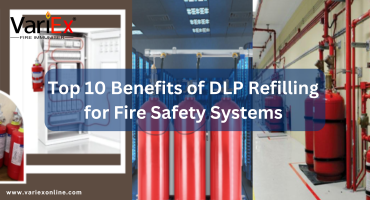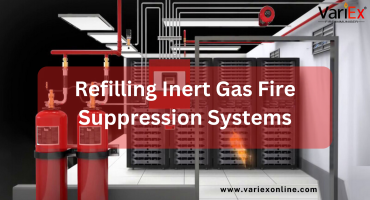![]()
Fire Immuniser
+91-7829629111
Email: info@variex.in
Varistor Technologies Pvt. Ltd.
Block-1, First Floor, Ardente Office One, Hoodi Circle, ITPL Main Road, Bengaluru, Karnataka 560048, IN
What Is The Difference Between Fire Extinguisher And Fire Suppression System
What Is The Difference Between Fire Extinguisher And Fire Suppression System
Fire safety equipment plays a crucial role in protecting lives and property from the devastating effects of fires. Among the most widely recognized tools are fire extinguishers and fire suppression systems. While both serve the purpose of combating fires, they differ significantly in design, operation, applications, and maintenance requirements.
This comprehensive guide explores the differences between fire extinguishers and fire suppression systems, helping you understand their unique roles in fire safety strategies.
Table of Contents
- Introduction to Fire Extinguishers and Fire Suppression Systems
- Importance of Fire Safety Equipment
- What Is a Fire Extinguisher?
- Definition and Types
- Mechanism of Operation
- Applications
- What Is a Fire Suppression System?
- Definition and Types
- Mechanism of Operation
- Applications
- Key Differences Between Fire Extinguishers and Fire Suppression Systems
- Advantages of Fire Extinguishers
- Advantages of Fire Suppression Systems
- Limitations of Both Systems
- Fire Extinguishers vs. Fire Suppression Systems: Comparison Table
- Choosing the Right Fire Safety Tool
- Maintenance and Compliance Requirements
- Innovations in Fire Safety Technology
- Regulatory Standards and Guidelines
- FAQs About Fire Extinguishers and Fire Suppression Systems
- Conclusion
Importance of Fire Safety Equipment
Fire safety equipment is essential for:
- Life Safety: Protecting occupants during fire emergencies.
- Property Protection: Minimizing damage to structures and assets.
- Regulatory Compliance: Meeting legal and insurance requirements.
- Fire Prevention: Controlling fires in their early stages to prevent escalation.
What Is a Fire Extinguisher?
Definition and Types
A fire extinguisher is a portable device designed for manual use to extinguish small fires. It contains an extinguishing agent suitable for specific fire classes (A, B, C, D, or K).
Types of Fire Extinguishers:
- Water-Based: Effective for Class A fires involving combustibles.
- Foam: Used for Class A and B fires.
- CO₂: Ideal for Class B and C fires, leaving no residue.
- Dry Chemical: Versatile for Class A, B, and C fires.
- Wet Chemical: Specifically for Class K fires in kitchens.
Mechanism of Operation
- The user pulls a safety pin to unlock the device.
- A lever is pressed to release the extinguishing agent under pressure.
- The agent is directed at the base of the fire to suppress it.
Applications
- Homes, offices, and schools.
- Vehicles and boats.
- Industrial facilities and workshops.
- Commercial kitchens.
What Is a Fire Suppression System?
Definition and Types
A fire suppression system is an automatic system designed to detect and suppress fires without manual intervention. It is integrated into a building’s infrastructure and tailored to specific fire risks.
Types of Fire Suppression Systems:
- Water-Based Systems: Includes sprinklers and water mist systems.
- Gas-Based Systems: Uses inert gases or chemical agents like FM-200.
- Foam-Based Systems: Smothers fires involving flammable liquids.
- Dry Powder Systems: Effective for combustible metal fires.
- Wet Chemical Systems: Designed for kitchen grease fires.
Mechanism of Operation
- Sensors detect fire indicators such as heat, smoke, or flames.
- The system activates automatically, releasing the extinguishing agent.
- The fire is suppressed or extinguished, often without human intervention.
Applications
- Data centers and server rooms.
- Industrial and chemical facilities.
- Commercial kitchens and restaurants.
- Healthcare institutions and archives.
Key Differences Between Fire Extinguishers and Fire Suppression Systems
| Aspect | Fire Extinguisher | Fire Suppression System |
|---|---|---|
| Type | Portable, manually operated device. | Automatic, integrated system. |
| Activation | Requires human intervention. | Activates automatically upon detection. |
| Coverage | Localized to the operator’s reach. | Covers entire designated areas. |
| Use | Designed for small fires. | Designed for large-scale or specialized fires. |
| Extinguishing Agents | Water, foam, CO₂, dry chemicals, wet chemicals. | Water, gas, foam, or powder. |
| Maintenance | Periodic inspections and refills. | Regular testing, inspection, and servicing. |
| Cost | Low upfront cost. | Higher installation and maintenance costs. |
| Applications | Homes, vehicles, and small spaces. | Commercial, industrial, and specialized environments. |
Advantages of Fire Extinguishers
- Accessibility: Easy to use and available in most locations.
- Affordability: Low cost and minimal installation requirements.
- Versatility: Suitable for a wide range of fire types.
- Portability: Can be carried to the fire’s location.
Advantages of Fire Suppression Systems
- Automatic Activation: Does not require human presence.
- Comprehensive Coverage: Protects large or complex areas.
- Specialized Application: Tailored to specific fire risks, such as electrical or grease fires.
- Minimal Downtime: Rapid response limits fire damage.
Limitations of Both Systems
Fire Extinguishers
- Limited range and capacity.
- Requires proper training for effective use.
- Ineffective for large or rapidly spreading fires.
Fire Suppression Systems
- High upfront and maintenance costs.
- Requires professional installation and periodic servicing.
- May not be portable or suitable for temporary needs.
Fire Extinguishers vs. Fire Suppression Systems: Comparison Table
| Feature | Fire Extinguisher | Fire Suppression System |
|---|---|---|
| Operation | Manual | Automatic |
| Response Time | Depends on operator. | Immediate upon detection. |
| Mobility | Portable | Fixed system. |
| Best For | Small, contained fires. | Large-scale or specialized fires. |
| Cost | Low | High |
| Installation | No installation required. | Requires professional installation. |
Choosing the Right Fire Safety Tool
When deciding between a fire extinguisher and a fire suppression system, consider the following:
- Environment:
- Use fire extinguishers in small spaces like homes and offices.
- Install suppression systems in large or high-risk areas like data centers and industrial facilities.
- Fire Risks:
- Evaluate the types of fires likely to occur.
- Opt for specialized suppression systems for specific hazards, such as electrical or grease fires.
- Budget:
- Fire extinguishers are cost-effective for general use.
- Suppression systems require a higher investment but offer enhanced protection.
- Compliance:
- Ensure compliance with local fire codes and NFPA standards.
Maintenance and Compliance Requirements
Fire Extinguishers
- Monthly Checks: Verify pressure levels and ensure accessibility.
- Annual Inspections: Conduct professional servicing and refills.
- Replacement: Replace extinguishers every 5–15 years, depending on type.
Fire Suppression Systems
- Regular Testing: Test sensors, valves, and discharge mechanisms.
- System Upgrades: Update components to meet current safety standards.
- Compliance Reports: Maintain documentation for regulatory compliance.
Innovations in Fire Safety Technology
Advancements in technology have enhanced the capabilities of both fire extinguishers and suppression systems:
- Smart Systems: IoT-enabled suppression systems for real-time monitoring.
- Eco-Friendly Agents: Non-toxic and environmentally safe extinguishing materials.
- Advanced Extinguishers: Lightweight and ergonomic designs for ease of use.
Regulatory Standards and Guidelines
Both tools are governed by fire safety standards, including:
- NFPA 10: Standards for portable fire extinguishers.
- NFPA 13: Guidelines for sprinkler and suppression systems.
- Local Fire Codes: Mandates for installation and maintenance requirements.
Conclusion
Fire extinguishers and fire suppression systems are complementary tools in fire safety, each serving distinct roles. Fire extinguishers are cost-effective and portable solutions for small fires, while suppression systems offer automated, comprehensive protection for large-scale or specialized environments.
Understanding their differences, advantages, and limitations allows individuals and organizations to make informed decisions, ensuring effective fire safety strategies tailored to their specific needs.
Frequently Asked Questions
No, fire extinguishers are suitable for small fires, while suppression systems handle larger or more complex fires automatically.
This depends on local fire codes and the building’s use, occupancy, and fire risk assessment.
Monthly visual checks and annual professional inspections are recommended.
Fire extinguishers are affordable, while suppression systems involve higher installation and maintenance costs.
Yes, many facilities use both for comprehensive fire safety coverage.
Final Say
At VariEx.in and VariexOnline.com, we specialize in supplying and installing top-quality fire fighting systems and equipment. From fire extinguishers to advanced suppression systems, we offer comprehensive solutions tailored to your needs. Our experienced team ensures precise installation and maintenance for optimal safety.
Trust VariEx for reliable fire protection. Contact us online or call 7829629111 to learn more.
We specialize in manufacturing, supplying, and distributing a comprehensive range of fire fighting equipment, including state-of-the-art fire extinguishers. Read our most searched blogs and find interesting information on topics such as how to use a fire extinguisher, how to calculate fire fighting water tank capacity, fire extinguisher refilling, obtaining a Fire NOC, understanding fire fighting systems, types of fire protection systems, the fire hydrant system, and the fire sprinkler system. These resources provide essential knowledge for ensuring safety and compliance with fire safety regulations. Additionally, you can explore guides on the maintenance of fire protection equipment, the latest advancements in fire safety technology, and best practices for fire risk assessment and management.
Our expertise extends to fire alarm systems, fire hydrant systems, and fire suppression systems, including fire sprinklers. Each product meets rigorous international standards for reliability and performance, ensuring effective fire safety products tailored to diverse applications and industries. Additionally, we are providing Fire Extinguisher Refilling and AMC services to ensure ongoing maintenance and operational readiness of fire safety equipment.


